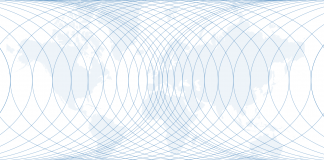Last week, Philippine President Ferdinand Marcos Jr. visited President Xi Jinping in China, where they agreed to cooperate in peace and security operations and in developing gas and oil deposits in the South China Sea. On the surface, this seems like a routine diplomatic meeting, but that it took place at all suggests there may be more than meets the eye. Relations between the Philippines and China have been strained in the past, with Beijing unhappy about Manila’s ties with the U.S. and Manila angry about Beijing poaching in its territorial waters.
Eased tensions between the two reveals some of the dynamics at play between China and the United States. China’s strategic problem is that it depends on international trade, particularly for minerals, and on exports, particularly to the United States. Exports account for about 20 percent of China’s gross domestic product.
From this, it follows that the most important Chinese imperative is to maintain exports, and the greatest threat to its exports is if China were denied access to the global sea lanes. The ports on China’s east coast are the key to China’s economy. If they were closed or interdicted for any reason, the Chinese economy would be stunned at least and shattered at most.
There is a sense in the United States and elsewhere that China is a potentially offensive nation. In fact, it is a fundamentally defensive nation. Its fear is that the U.S. would try, by military action or otherwise, to close China’s ports or prevent its ships from transporting goods. This necessitates from China a military strategy designed to limit U.S. access to the South China Sea and guarantee its own access to the Pacific.
The line of islands running from Taiwan to Indonesia is the key to solving China’s strategic problem. The islands provide limited passage into the Pacific and are narrow enough that U.S. naval forces could block the relatively narrow gaps they create. There is a great deal of discussion about China’s intentions toward Taiwan. An invasion of Taiwan would require amphibious forces to move across the Taiwan Straits, where they would be vulnerable to Taiwanese or American anti-ship missiles.
Beijing would struggle to absorb a failed invasion, of course, but even if the operation succeeded, it wouldn’t change China’s geographic challenges. It is not Taiwan that Beijing needs to control but the straits north and south of Taiwan. The northern route is flanked by an increasingly powerful Japan, with a force built to block a Chinese adventure. Holding Taiwan doesn’t change this fact. Nor does it change the reality that the southern and northern routes around Taiwan are open waters vulnerable to a host of long-range weapons.
The more interesting gap is the 600 miles (965 kilometers) between Taiwan and the Philippines. It is a broader passage, which is necessarily more difficult to close. The same could be said for the 300-mile expanse south between the Philippines and Indonesia. Indeed, the fact that the Philippines is such a vast congregation of islands creates a multiplicity of routes that China covets. Unlike the northern routes, these southern passes demand defensive forces to be spread much more thinly. And if China had access to the Philippines, it could base aircraft and missiles as an added threat and uncertain variable.
The key is reaching an understanding with the Philippines. Beijing and Manila have any number of reasons to distrust each other, so these negotiations are not even the beginning of serious thoughts. If talks become more serious, the United States has several ways it can counter, of course, but it raises the question of intentions and costs. China would likely pay a very high price for access to the Philippines because it is worth more than Taiwan, and it likely wouldn’t have to fight a potentially losing war to access it. The Philippines may not completely liberate China from the first island chain, but it is impossible to believe Beijing isn’t dreaming about it. Manila may be content to sit and wait, wondering what kind of toll it can extract from the U.S. for refusing an offer from China.
Not incidentally, the commander of the US Marines announced on Monday a program to prepare the Philippines for war in conjunction with Japan. What this means is unclear. It isn’t intended to start a war but to prevent one. What is certain is that China’s meeting with Marcos rang alarm bells in Washington.




 Special Collection – The Middle East
Special Collection – The Middle East